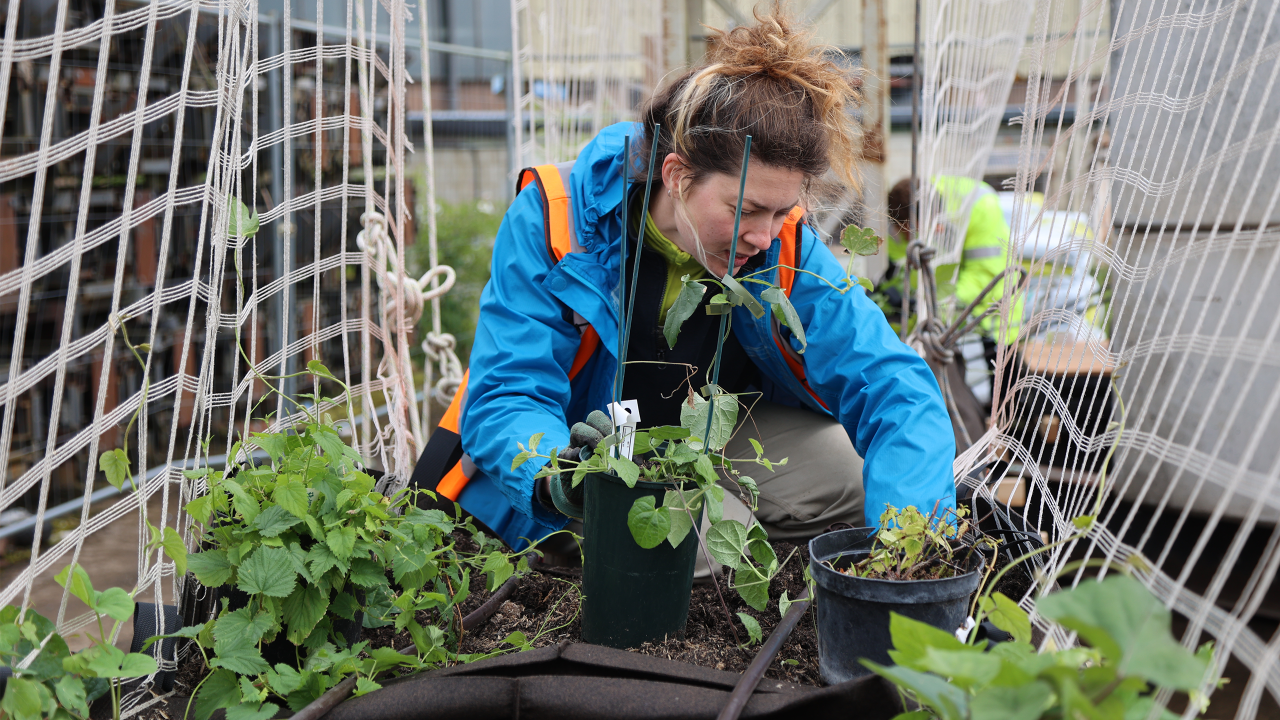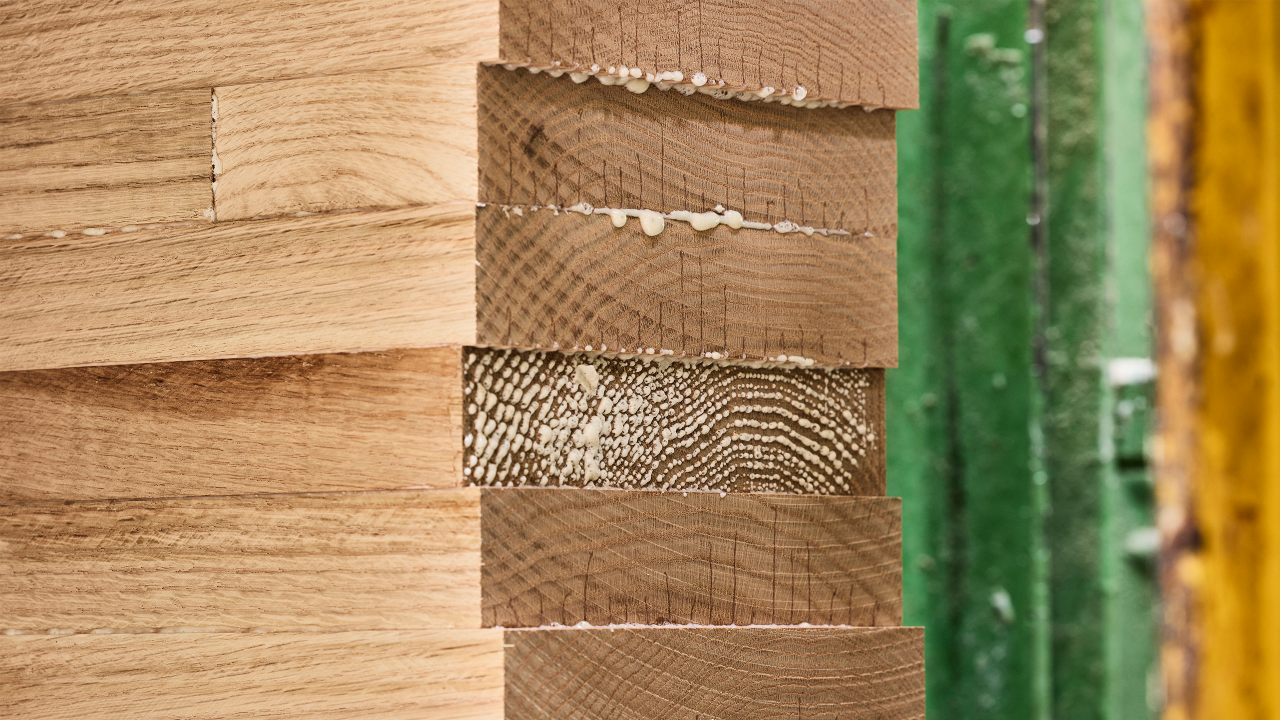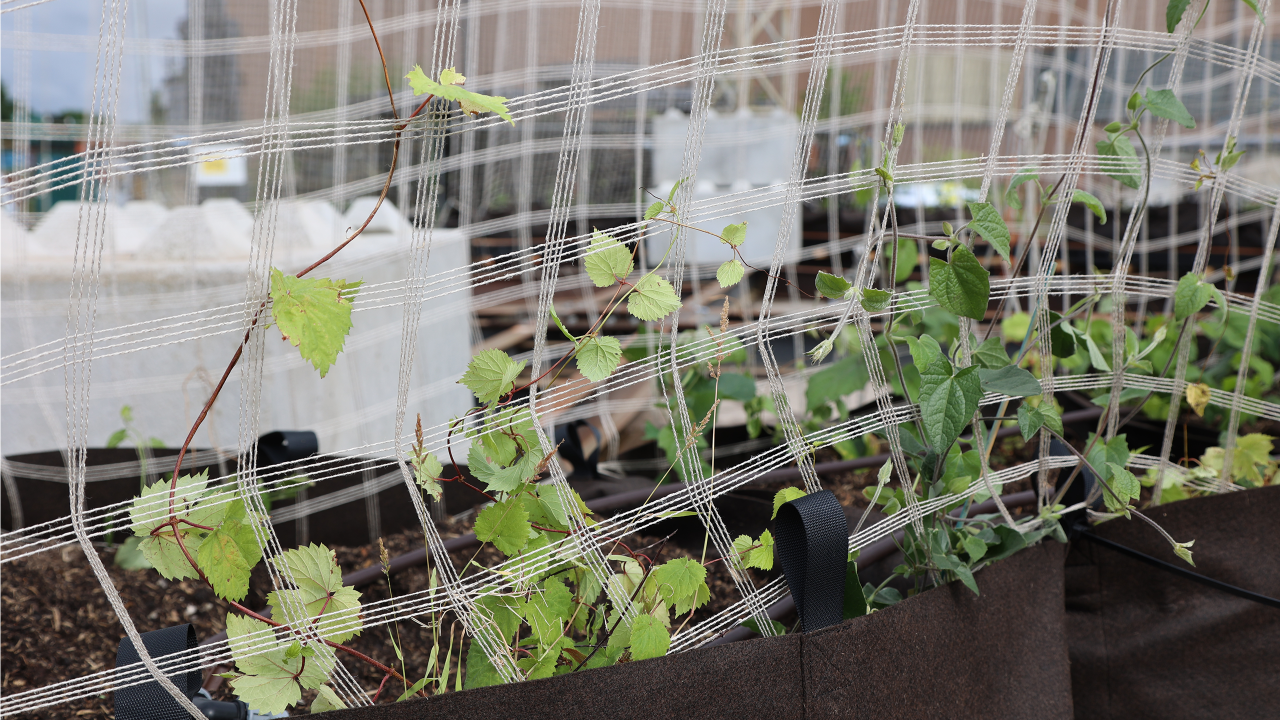Manufactured by Neue Holzbau, a Swiss company known for its innovation in engineering and manufacturing complex timber structures, the structure consists of a series of red oak glulam timber triangles. These hold suspended biodegradable nets, which provide a framework for climbing plants, notably Ipomoea purpurea, Thunbergia alata, Paederia lanuginosa and Phaseolus coccineus, rooted in textile planters at the base of each net. The sails are greened with around 20 different plant species, creating a living ecosystem that enriches local biodiversity, serves as a habitat for essential insect populations, aesthetically enriches the urban landscape, and provides a sheltered space where visitors can gather and relax.
The system combines AHEC’s timber knowledge with Studio Diez’s design expertise and OMC°C’s in-depth understanding of planting and irrigation technology, substrate performance, wind loads, and all the other technical details integral to the installation of the structure in public spaces.
For this project the whole construction team recognised the structural potential of red oak, expanding its application to larger scales. This has been made possible through the expertise of Neue Holzbau and Bollinger + Grohmann structural engineers.
Because red oak is denser and more stable than the standard construction timbers, less material is required, minimising the visual prominence and footprint of the structure while maintaining high structural performance. The use of red oak also allows for more precise and long-lasting joints that enable the structure to be disassembled, moved, repaired and/or reassembled many more times than standard construction materials, supporting the longevity of the piece.
Read more about the testing to demonstrate red oak's suitability for the project in this report.





